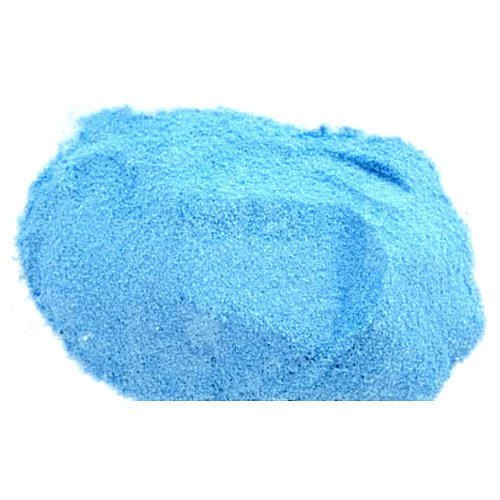Manganese EDTA
220 आईएनआर/Kilograms
उत्पाद विवरण:
- आण्विक सूत्र C10H12MnN2O8
- शेप
- गंध
- आणविक भार 357.14 g/mol
- विषैला
- भौतिक रूप
- एप्लीकेशन
- अधिक देखने के लिए क्लिक करें
X
मूल्य और मात्रा
- 50
उत्पाद की विशेषताएं
- Helps plants absorb manganese for photosynthesis and growth
- 99% (minimum)
- 5.5 - 7.5 (in solution)
- Ethylene Diamine Tetra Acetic Acid (EDTA) and Manganese
- Completely soluble in water
- Light pink or pale brown powder
- Chelated compound of manganese with EDTA ligand
- 29224985
- Decomposes before melting
- 2 years in original packaging if stored properly
- ग्राम प्रति घन सेंटीमीटर (g/cm3)
- Agricultural Grade
- EDTA complex with manganese ion
- 15375-84-5
- 357.14 g/mol
- C10H12MnN2O8
- 239-407-5
उत्पाद वर्णन
We are offering Manganese EDTA Powder.Chelated Manganese EDTA is a water-soluble nutrient that aids in the growth of your plants. It is mostly used as a micronutrient in horticulture. Manganese fertilizers aid in the prevention and correction of manganese deficiency due to nutritional imbalancesOptimized Manganese Absorption
Manganese EDTA delivers manganese in a chelated form, ensuring efficient absorption by plant roots and leaves even in soils where manganese is typically unavailable. It is crucial for enhancing the photosynthesis process, promoting lush growth and robust crop yields.
Simple, Versatile Application
This product is entirely soluble in water, suitable for direct soil mixing, foliar sprays, and fertigation systems. Its granular or powdered form dissolves quickly, allowing for easy and uniform application tailored to your crops requirements.
Long Shelf Life, Safe Handling
With a shelf life of up to two years in unopened original packaging, Manganese EDTA maintains its integrity when stored in dry, cool conditions. It is non-toxic, odorless, and safe for agricultural use, requiring standard safety precautions during handling.
FAQs of Manganese EDTA:
Q: How should Manganese EDTA be applied in agricultural settings?
A: Manganese EDTA can be mixed with water for direct soil application, used as a foliar spray, or incorporated into fertigation systems. Always dissolve the recommended quantity completely in water to ensure even nutrient delivery to plants.Q: What benefits does using Manganese EDTA offer to crops?
A: Manganese EDTA helps correct and prevent manganese deficiency in plants, supporting robust photosynthesis and healthy growth. Enhanced nutrient uptake leads to improved plant vigor and increased yields, making it especially beneficial for sensitive crops.Q: When is the best time to apply Manganese EDTA to crops?
A: For optimal results, apply Manganese EDTA during active growth stages or upon early signs of manganese deficiency, such as chlorosis between leaf veins. Early intervention maximizes uptake and effectiveness, protecting plants during critical growth phases.Q: Where should Manganese EDTA be stored to maintain its quality?
A: Store Manganese EDTA in its original, tightly-sealed packaging in a cool, dry place, away from direct sunlight and moisture. Proper storage preserves its purity and efficacy over the two-year shelf life period.Q: What is the process of Manganese EDTA absorption in plants?
A: The EDTA ligand in Manganese EDTA forms a stable complex with manganese, keeping it soluble and readily available for plant absorption via roots or leaves, even in soils with challenging pH levels or high insoluble manganese content.Q: Is Manganese EDTA safe to use, and does it have any unpleasant odor?
A: Manganese EDTA is odorless and non-poisonous, designed for safe use as an agricultural micronutrient. Standard handling practiceslike wearing gloves and gogglesare recommended to minimize direct contact.Tell us about your requirement

Price: Â
Quantity
Select Unit
- 50
- 100
- 200
- 250
- 500
- 1000+
Additional detail
मोबाइल number
Email






